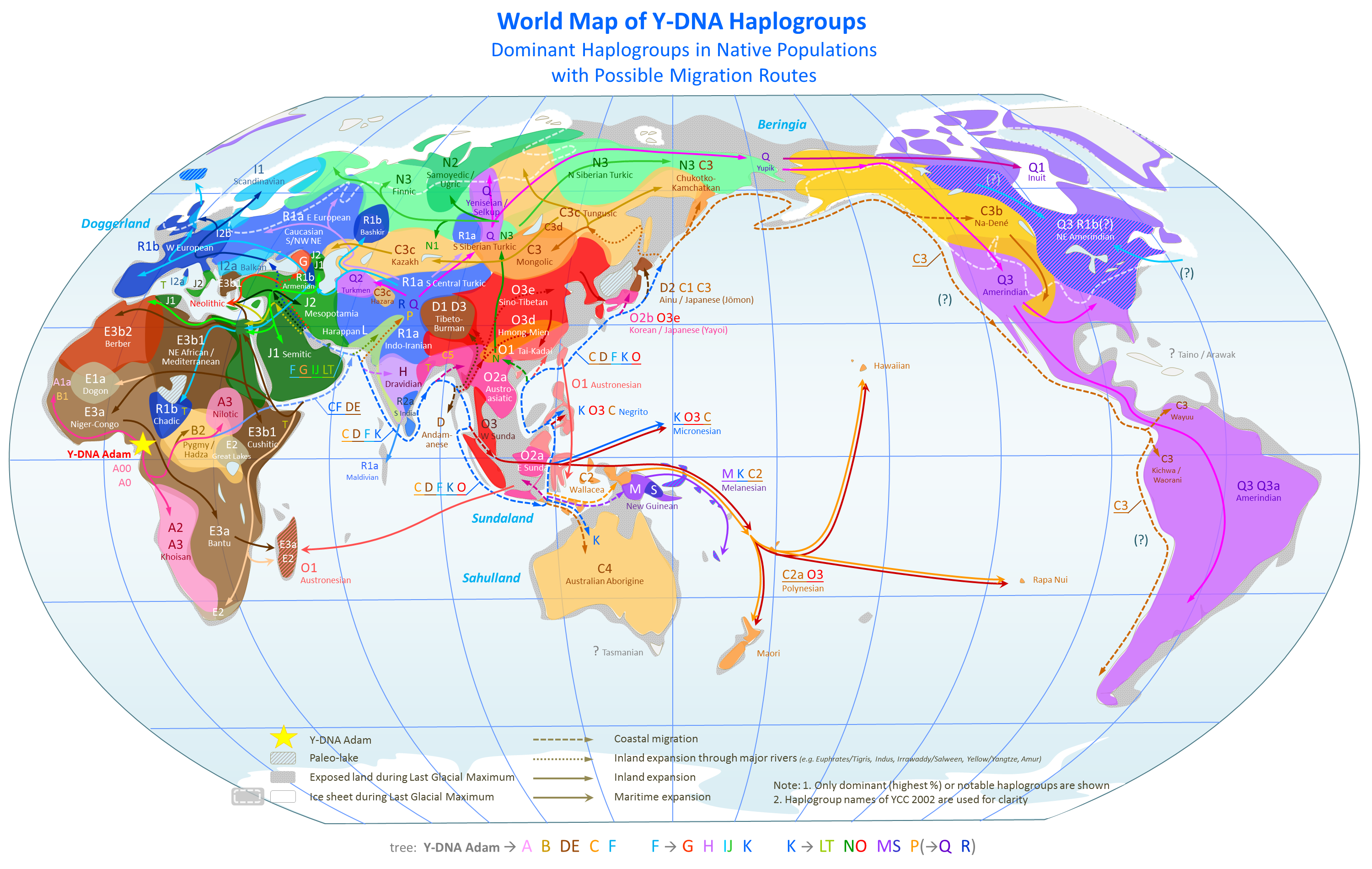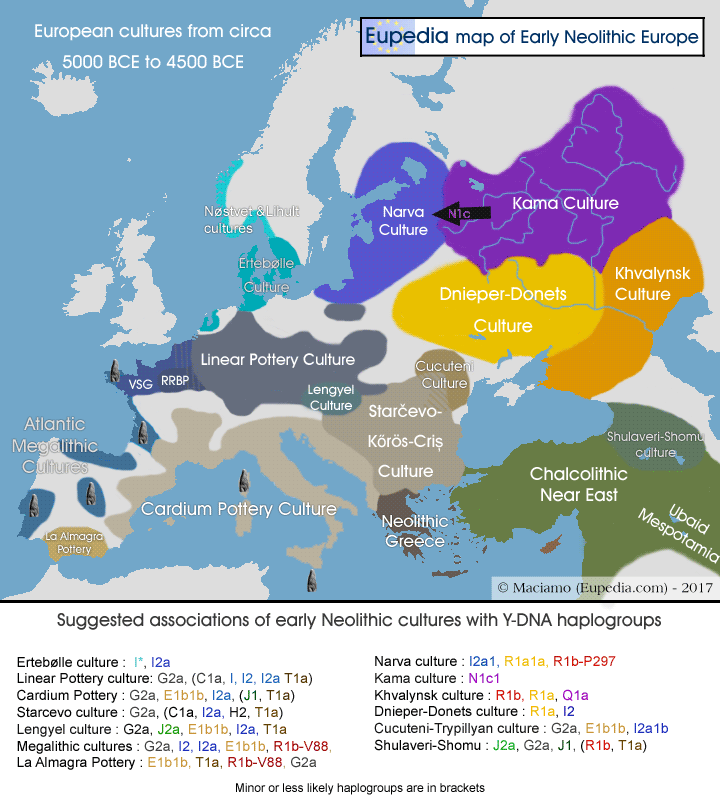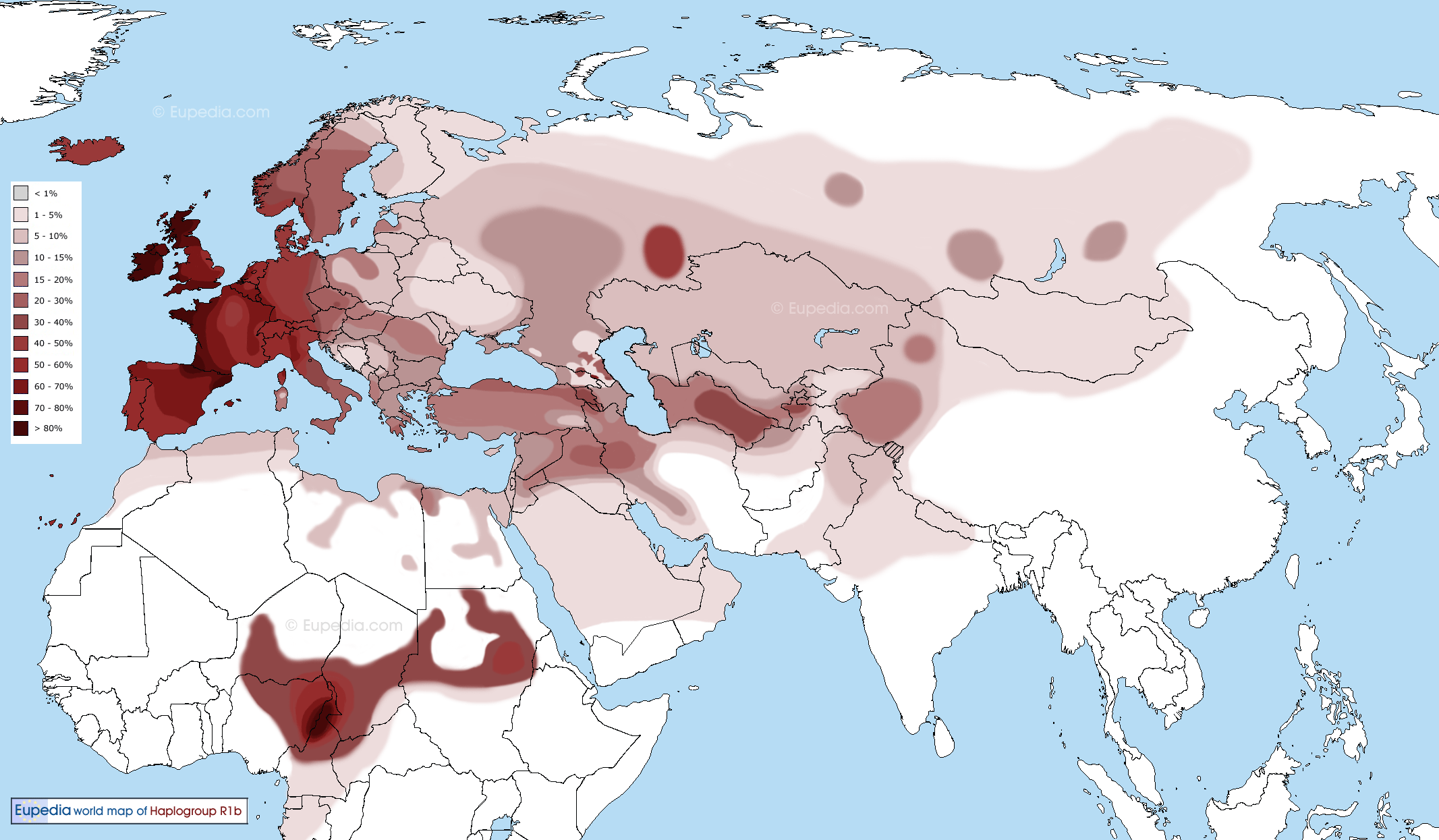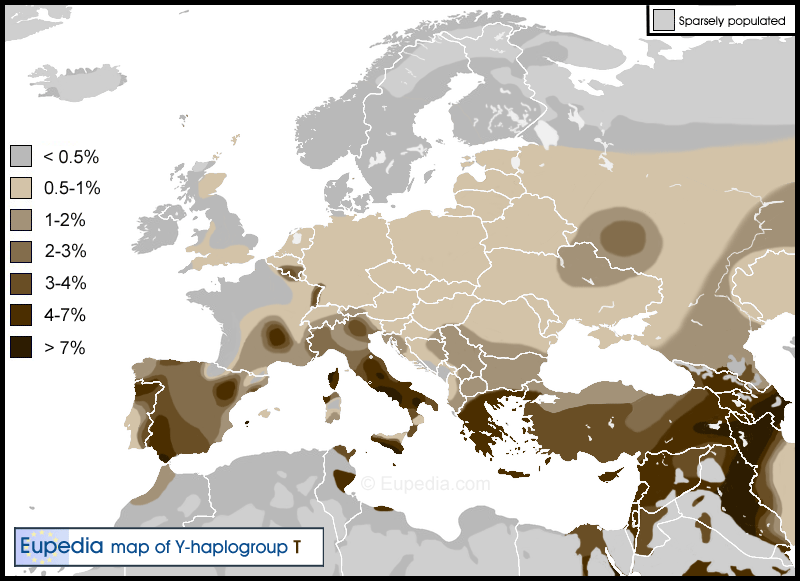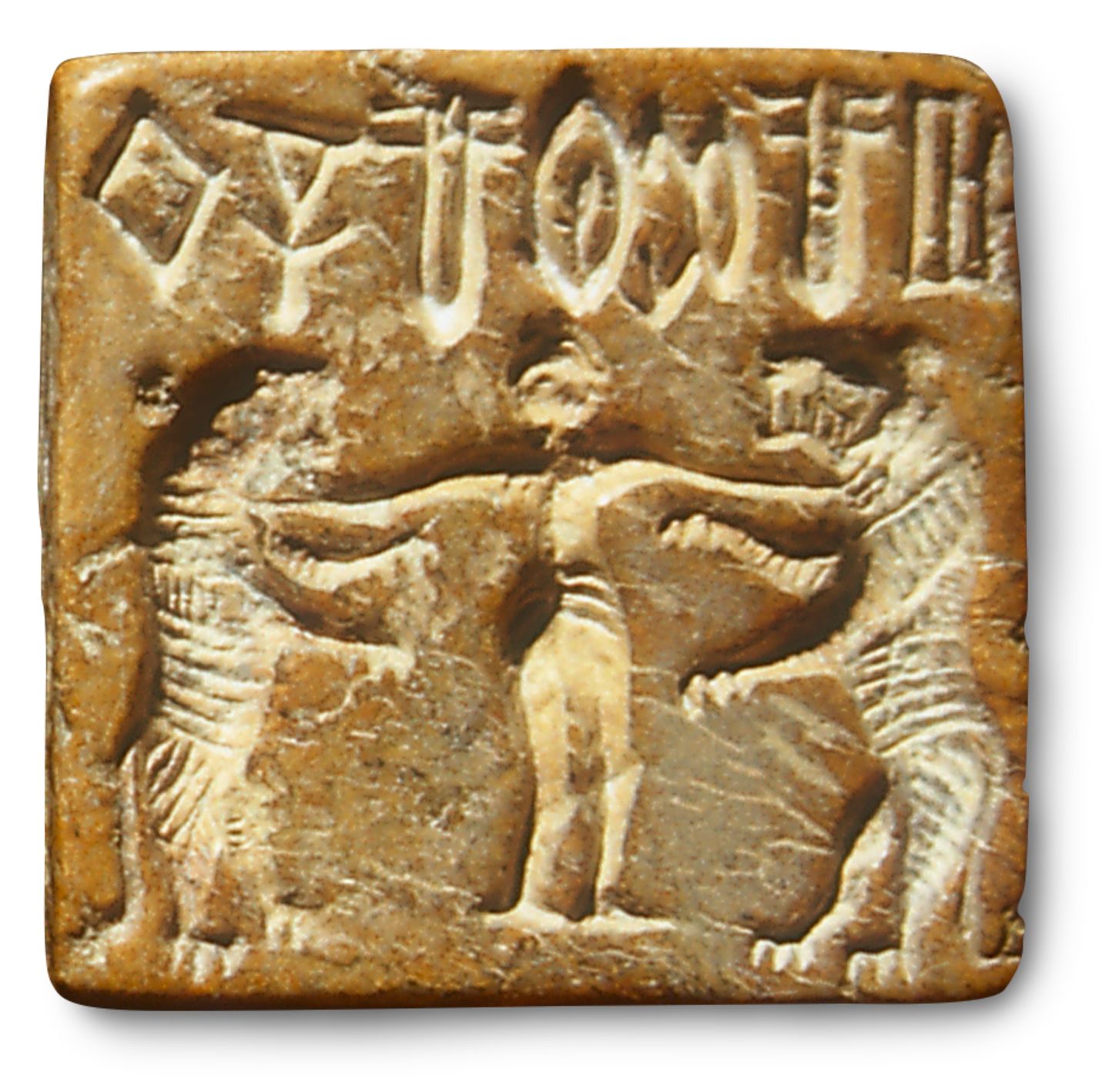-
-
Notifications
You must be signed in to change notification settings - Fork 3
Proto-Indo-European is the consensus Theory in which many of the commonly spoken languages in the world from English to Hindi derive from pioneering groups of 'settlers' who conquered the world with horses some ⋍5000 years ago.
In pre-state societies, languages are thought to spread primarily through the movements of people.
After the last ice age the lineages of Eurasia, quite separately clustered at that time, entered an age of great genetic mixing.
The (most dominant) root of the PIE language likely formed when three people met and mixed north of the black sea:
- caucasian potters
- early european farmers and coppersmiths
- nordic shamans (EHG)
In this process PIE was formed by components of other proto languages:
- semitic from the mesopotamian roots of agriculture (J1,J2)
- maybe proto PIE from the megalithic societies spreading from Göbleki Tepe (H,T,R)
- picking up caucasian by the northern spread before 4000 BC (G)
- turk from the steppes (Q,C)
- uralic from the northern borders (I,N)
Here this theory is extended in that 'Proto-Indo-Europeans' did not stop at the gates of Sumeria and Egypt, but that they went straight through them. Either by forming the founding brotherhood of the international elite (which is depicted in Egyptian or Armana letters), or at the very least being in continuous strong contact with the ancient superpowers, leaving tremendous marks on all languages of Eurasia and Egypt.
Genetic studies revolutionize the fields of history and archaeology. While at the end of last century big migration theories (Völkerwanderungen) came largely out of vogue, thanks to modern DNA sequencing techniques, we now know that indeed Neolithic and Chalcolithic founding populations often almost completely replaced their Mesolithic anchestors. An interesting hotspot was around the Black Sea, where the last big replacement wave arose.
A Adam @ Africa (west)
B Bimbo/Pygmy
C Kazakh Turk, Inuit, Oceania, Americas (C4: Aborigines) Aurignacian (with N, R + M, U) ⇨ Q
D Tibet, Burma µD old Andaman&Japan! Ainu C1a1,C2,D & Jomon N9b 90% replaced by O ⋍300BC
E Ethiopian Africa E1b1b Natufians! E3b Elba+Greek+Lybia E1b1b1b Eneolithic 2ⁿᵈ wave EU
F Father Fakirs Pakistan Oman & Isles Proto-Aurignacian (Gravettian BT, CT, F, C1a2) F>GHIJK>MNOPQRSLT vs µF
G Gobekli & Georgian Gründer, Mesolithic & Megalithic Europe EEF! Goats?
H historic Eurasia, Harappan (Dravidian) mtDNA < N HV Danube+Mesopotamia (Sicily,Jordan)
I Indiginous EU e.g. Magdalenian 17-12k BC (IJK) & EEF!
J Jews J1 Semitic J2 ᴶIran ᴶGeorgian J2a ᴶIonian ᴶEurasian ᴶGründer Elba⇨Harappa J2b Iran
K Costal Kashmir ⇨ Oceania C
L Lost Elamite 25k BP Harappan Maykop (with J2a) Balochistan 28% L mtDNA Eve @ Africa "Libya" Elephantine
M Malay @ New Guinea only | maternal mitochondrial mtDNA @ India
N Nordic Sibiria | mtDNA @ Eurasia
O Oceania & Ost-Asien (Han…)
P Paleo Pakistan ⇨ Q,R!
Q Queer Cuban Americas by Turk, Inuit, Oceania, Aurignacian (with N, R + M, U) ⇨ Q1a Huns@EU Khvalynsk
R Raka Euro-Iran… µR > U R0>HV
S mtDNA @Australia
T1 Taš-Templar Titans in Thebes Tigris & Troy
µT mtDNA Danube Udmurts(Uralic) Lebanon Lisboa Egypt Auvergne-Rhône (less Anatolia!)
U mtDNA @ Gravettian ⇨ U5b Uyghur BMAC Paleolithic Europe U4 25% Corded Ware & Catacomb culture
V HV Sicily+Mesopotamia (Danube,Jordan) almost exclusively! > K < R
V EU North Pole, not Finnic ;)
W Old Finnic
X Danube Veneti Greece Anatolia to Iran
Genetic homeland:

In other countries the brotherhood of kings formed a superimposed international elite ruling the natives. A queen of Jiroft in Iran ⋍3000BC was 1.80 tall with red hair and a golden eye implant. 99% of modern R1a descends from R1a1a (M417), a subclade that clearly expanded from the Bronze Age onwards. R1b Maykop, Mesopotamia, Levant, GB! J2 Tyre, Ray, Elam vs J1 Arab. Admixture of R1a,R1b,J2 moving SE.
These genetic traits were carried by the Copper Kings:
G2a Gigalithic Gründer G-PF-3147 Germany-Georgia (Maykop)! First wave replaced Mesolithic Europe 7k-4k BC. Interesting seaborne(!) pottery in Caucasus 80% Neolithic Anatolia, Iran, Rome G2a-L497 Alps cereal farmers, together/trading with J2a herders:
J2a Jewish, Ionian, seafaring Mediteran, Caucasian, Turk, Kura-Araxes, Minoan, Harappan! civilisations! cattle, goats, wine,oil & metal J-Z600 vs J2b1 Arabian
R1b1a1* 6400bp L23 Second wave cattle herders, Ashkenazim, Chad!
R1a1a1 8500bp-5500bp M417 Second wave: horse riders herding cattle
T2 titans rare in europe but very Egyptian & Caucasian (+Alps) T1a=semitic shepherds with Scythian G1 and Berber E-V13
Q-L56 L595 Lost Maykop-Oxus-China Lineage, maybe not proper PIE, but pre-Turk/Dravidian
Old lineages C1a2, H2 and I* are virtually extinct anywhere nowadays, and several others are now very rare in Europe (I2c, R1b-V88). G2a-L140 survived in IE elites from Scandinavia to India.
I1, U2, U4, U5, H OLD Nordic backdrop LBK & Funnel Beaker, with I2 hotspot in Dalmatia I* Mesolithic 25kBC
K Keltic+Göbekli+Palestine!
E1 Natufian, Berber cereal farmers & (later) cattle herders. E1b1b closely linked to the diffusion of Afroasiatic languages, none in Anatolia or Iran. E3 Niger-Congo+Bantu E1b1b1b second wave European subclade 3-5% Sopot culture
E3b1 Greek, Egyptian, Kush E-V13 European 'founders' diaspora, elite PIE/Jews, quickly spreading. Balkans 50% in Montenegro. up to 10% in Ural, Spain, Slavia 5% Scandinavia, E1b1b1b2a (M123) Anatolean (after first Neolithic wave!), Levantine

Noticably the Caucasus was a hotspot for G2, J2, T1 and R1, making the Maykop and Kura-Araxes cultures even more central in the history of urbanization! On the other hand genetic hotspots might indicate that these regions were secluded from 'modern' genes.
2017 NATURE VOL 546
Ancient Egyptians had little to no genetic kinship with sub-Saharan populations.
Strikingly, the mummies were more closely related to ancient Europeans and Anatolians than to modern Egyptians. The mummies in the study were of middle-class people, not royalty. "There was no detectable change for those 1,800 years of Egyptian history," Krause said. "The big change happened between then and now."
They set out to conquer the world and conquer they did:
The first predynastic mummy in Gebelein had red hair. So did Ramesses II!
There is a theory suggesting that before 2000 BC, Egyptians were of Caucasoid-European ethnicity. This is supported by the physical anthropology of the oldest mummies that have been found, the busts and statues of several pharaohs and their wives, the colored wall paintings discovered, and the descriptions provided in historical accounts.
Faces of some conquerers:

There are three main aspects of DNA studies:
- mitochondrial DNA maternal lines don't recombine.
- Y-DNA paternal lines of Y-chromosome don't recombine but reorder.
- Whole genome studies
- X-DNA semi conserved: only recombines at corners
Each person has up to 2^30 = 1 billion anchestor within 600 years:
Every human is related if you go back some centuries or millenia!
Moral:
Famous DNA researcher David Reich once had German collaborators drop out of a study when the findings seemed to mirror too closely Nazi propaganda about the Aryan race.
A queen of Jiroft in Iran ⋍3000BC was 1.80 tall with red hair and a golden eye implant. The first predynastic mummy in Egyptian Gebelein had red hair too.
"DNA is doing its forcing the hand of this discussion in archaeology, showing that in fact, major movements of people do occur. They are sometimes sharp and dramatic, and they involve large-scale population replacements over a relatively short period of time."
Hitler maybe forever destroyed the opportunity for scientists to have a rational unpolitical discussion about finds like these in Ancient Israel (then called Galilee) : https://www.livescience.com/63396-ancient-israel-immigration-turkey-iran.html
"[6500] years ago in what is now northern Israel, waves of migrating people from the north and east — present-day Iran and Turkey — arrived in the region. And this influx of newcomers had a profound effect, transforming the emerging culture."
Haplogroups of the Egyptian population:

Ancient Egyptians were closely related to Anatolian and Neolithic European populations. Sub-Saharan and Arabian influences only became strong after the fall of the Roman Empire.
With some exceptions:
Early rulers, Huni, Amenophis iii
MtDNA haplogroups
- Haplogroup H Old Bask Baltic Alps Wales H6=Bronze Age
- Haplogroup HV Sumeria Balkan Ukraine
- Haplogroup I Neolithic Anatolia ⇨ Europe (see N1a)
- Haplogroup J J2 Anatolia, Caucasus, Persia (not Arab!) J2b Ural,Greek
- Haplogroup K I18N GOBEKLI!, EU, Palestine/Kurds/Celts Caucasus
- Haplogroup T1 VINCA0! VAN Ural Sumeria Lebanon Egypt ≠
- Haplogroup T2 Ural Udmurts Maykop Dutch Syria
- Haplogroup U2 Caucasus, Jordan! U5 Sami U6 Marocco
- Haplogroup W Finland + West Slaws + Coastal Cities!
- Haplogroup X North Italy, Damaskus!, Maykop, Anatolia, Spain, Scotland!
- Haplogroup G Georgian, Luwian
- Haplogroup V Sami! HV0 Europe Berber Israel: absent/HV
- Non-European haplogroups ⋍30% :
- R0 Arab! see HV ≠ R1
- L Berber!, Elam, Ethiopian, Arab
- M Indian, Arab
- Other, especially Arabian and African haplogroups are mostly ABSENT!
Y-DNA
- Haplogroup I1 VAN, Alban, FINƒ Scandinavian
- Haplogroup I2 Neolithic Albania to Ukraine I2b=I2a2: German/Scot!
- Haplogroup J1 Arab! Some southern Europe
- Haplogroup J2 Kura-Araxes!, Anatolia, Troy!, Italy, Maykop, Minoan
- Haplogroup N1c Russian, Fin, Lithuania
- Haplogroup Q Sweden, Sicilly! Lyon/Genf!?
- Haplogroup R1a Poland+Russia (Slaves)
- R0⋍H R1a-Z93 Hindukush! Z283:Germanic(Corded Ware) Z94:Iran+Mittani
- Haplogroup T Titans in Thebes and Tigris, Syria, Southern Europe (≠T1)
- Haplogroup R1b West Europe, Ireland, east of Ural, Sahel!, Red Hair (Ramses, Usermontu, Gebelein mummy, …?)
Three waves of European settlement
We are all human
Next up: The famous "Tamer of two beasts" 𓀪 𓀫 𓀬 in Jirof & Indus:
Better trace symbol than the swastika
Home | Alphabet | Grammar | Gardiner-signs
Home
preserved words
PIE
Inventions
Kur
Signs
Keyboard
Dictionary
Swadesh lists
Text Corpus
Axioms
Grammar
Pronouns
Numbers
Highlights
Cosmos
Gothic
Akkadian
determinatives
+
| äЯ | 𓄿 |
|---|---|
| A | 𓂝 |
| b | 𓃀 |
| c | 𓍿 |
| D | 𓏏 |
| δ | 𓂧 |
| E | 𓇋 |
| F | 𓇋𓆑 |
| G | 𓎼𓐍 |
| h | 𓉔 |
| I | 𓇋 |
| J | 𓆓 |
| K | 𓎡𓌨𓐍 |
| L | 𓏯𓃭 |
| M | 𓅓 |
| N | 𓈖 |
| ϱ | 𓍢𓍯 |
| P | 𓊪 |
| Q | 𓏘 |
| R | 𓂋 |
| S | 𓋴 |
| T | 𓏏 𓎀 |
| ṳ | 𓅱𓍢 |
| V | 𓆑 |
| W | 𓅳 |
| X | 𓎛 |
| Y | 𓏭 |
| Z | 𓊃 𓎀 |
| SH | 𓈙 |
